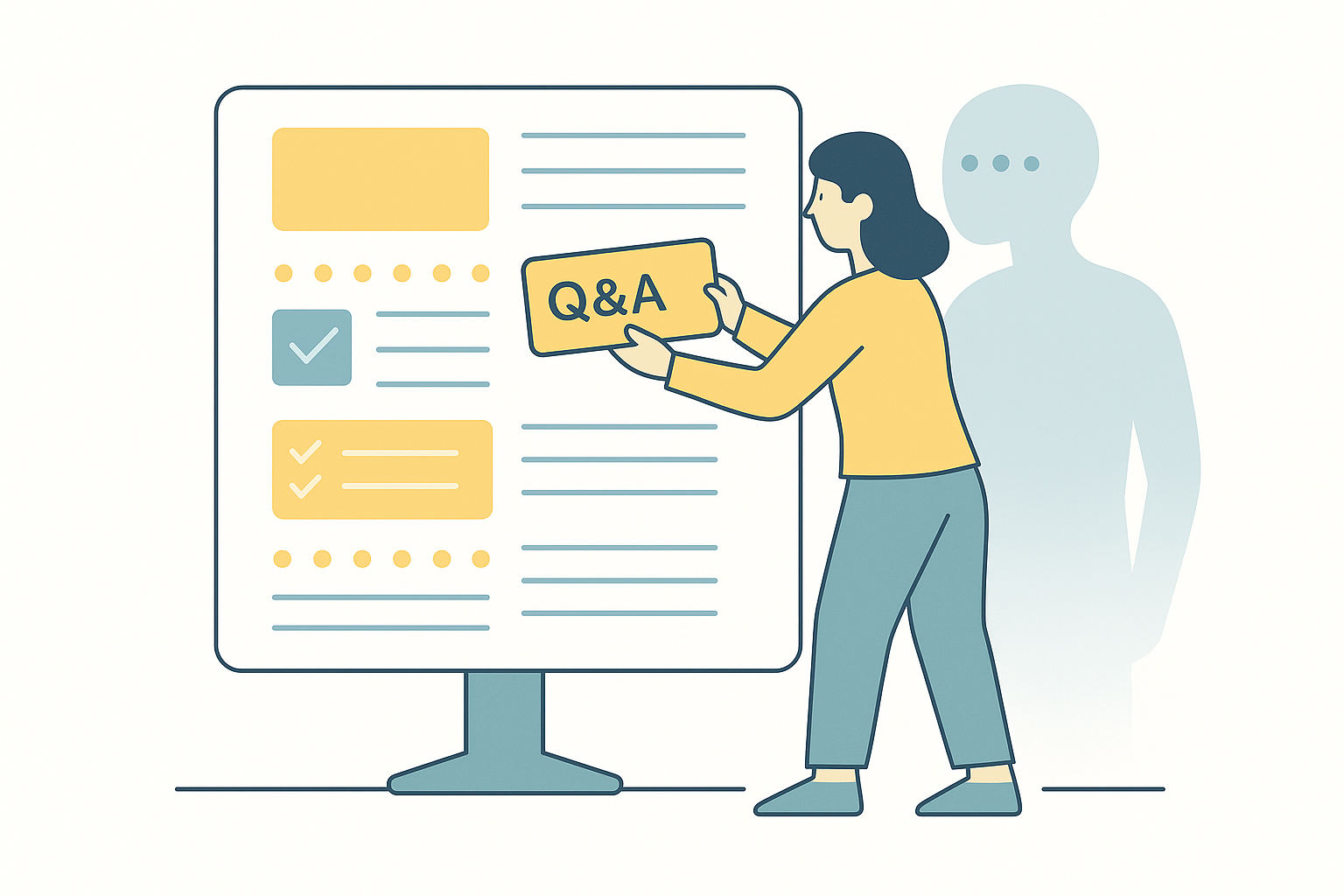ABM That Moves Buying Committees (Not Just Personas)

Inside the Chaos: What Enterprise Buying Committees Actually Look Like
Most enterprise deals don’t collapse because your value proposition missed the mark.
They collapse in rooms you never get to see, among stakeholders you never fully engaged.
Your champion loved the demo but can’t get finance to buy in. Legal is circling back on questions that were already answered. A new IT director demands extra security reviews. Before you know it, the opportunity goes dark.
That’s the reality of buying committees in B2B. It isn’t a linear path from MQL to closed won, but a maze of agendas, hierarchies and internal tug-of-war.
If your ABM strategy treats decision-making like a neat flowchart, you’re setting yourself up for disappointment. What you really need is a plan grounded in how groups operate >> interpersonally, psychologically, politically!
This isn’t academic theory. It’s based on the ABM programs I’ve built and advised on across tech, healthcare and education sectors. Those campaigns closed eight-figure deals, revived stalled pipelines and turned internal skeptics into champions.
Ready to see what really moves buying committees? Let’s dig in.
Why Buying Committees Feel Like Herding Cats
Enterprise deals involve six, eight, even a dozen people… each with their own objectives. You’ve got:
Finance worrying about cost, risk and payback.
Legal hunting for liability in fine print.
IT focused on integration headaches and roadmap conflicts.
Procurement demanding documentation, compliance proof, audit trails.
End-users wary of disruption to their daily workflows.
Executive sponsors watching alignment with strategic goals.
If your marketing speaks to “the buyer,” it’s speaking to nobody. Real deals stall because messages land on deaf ears or fuel internal friction.
In a campaign for a cloud-based learning platform, our champion was the Director of Learning. The demo went well, but a week later, the CIO called for a two-month pause to re-evaluate priorities. We assumed CIO meant “no, and we had almost paused” but a quick check revealed that a major security concern drove the decision… it was not a lack of interest like we thought. Once we surfaced a compliance report tailored to their environment, the committee resumed discussions and signed within 60 days.
That one deliverable created for the unseen stakeholder moved the deal from gridlock to green light.
Personas Are the Starting Point, Not the Finish Line
Persona profiling gives you a list. Build you persona stories to give you the story of how those personas interact. Hit me up if you need help!
When you map only persona titles at superficial level like “CIO,” “procurement lead” or “operations manager,” you miss the influence they have on each other. Traditonal persona worksheets assume separate silos. Unfortunately, buying committees don’t work like that.
In one school SaaS initiative I advised, we segmented content for principals, admins and PTA members . Everything looked great on paper, but adoption stalled at the finance review. Why? Because procurement had never been part of the conversation. We hadn’t built any materials that helped procurement advocate for the platform internally.
Instead of adding more brochure downloads, we created a procurement-specific one-pager: cost-benefit templates populated with real data pulled from that district’s budget. Finance saw the numbers. Procurement saw its next audit as a non-issue. Suddenly, the project moved.
Key takeaway: Personas tell you who to speak to. Decision-maps tell you who else will interrupt that conversation.
The Psychology Behind Group Decisions
Knowing stakeholder roles is table stakes. To influence a committee, you need to understand how people behave in groups. These are the primary levers you pull to build momentum.
Commitment and consistency
Once someone publicly supports an idea, they stick with it to avoid cognitive dissonance. If your champion makes the first endorsement, you’ve created a mini-alliance.Social proof
People look to peers to validate decisions. A single case study from a similar organization can tip internal debates in your favor.Loss aversion
The fear of making the wrong choice often outweighs the desire to be first. Framing your solution as the safer path clears hidden objections.The Abilene Paradox
Groups sometimes agree to decisions nobody wants, just to avoid conflict. Surface these silent objections early and address them head-on.Future pacing
Painting a vivid picture of life after your solution helps the committee envision success collectively. That shared vision accelerates alignment.
A fintech client complained that long evaluation cycles drained resources. We introduced a “future state roadmap” microsite showing step-by-step implementation milestones, with visuals of how user dashboards would look at each phase. By letting stakeholders visualize their future workflows, we cut the evaluation window by 30 percent and closed the deal three weeks ahead of target.
Building a Living Decision Map
Instead of static persona docs, create a decision map that evolves with each engagement.
Step 1: Catalog the obvious
Gather names from discovery calls, CRM tags and email threads.
Step 2: Uncover the hidden players
Talk to your sales rep: “Who usually weighs in at this stage?” Scan webinar attendee lists for unexpected job titles.
Step 3: Note motivations and fears
Assign each role a primary motivator: cost savings, risk reduction, user adoption (and a likely objection!).
Step 4: Update as you go
Treat the map as a living document. After every meeting, adjust roles, add new stakeholders, shift influence lines.
| Stakeholder | Role in Decision | What Drives Them | Potential Objection | Strategy to Address It |
|---|---|---|---|---|
| Director of Marketing | Champion | Early wins, time saved | “Does this integrate with our stack?” | Pre-built API demo + integration guide |
| VP of Finance | Approver | Budget impact, ROI | “Is this expense justified?” | ROI model + analog budget scenarios |
| Head of IT | Gatekeeper | Security, stability | “How does this affect uptime?” | Compliance certificate + uptime guarantee stats |
| Procurement Lead | Influencer | Vendor reliability, SLAs | “What if they underdeliver?” | Case study on on-time delivery, SLA performance |
| End-user Lead | Silent Influencer | Usability, training requirement | “Will this disrupt our workflow?” | Video tutorial + sandbox access |
With that map, you know exactly who needs what. You don’t spray generic emails. You deliver targeted plays that remove obstacles before they arise.
Equipping Champions with Internal Tools
Your champion won’t pitch you unless you give them what they need to win internally. Most ABM programs miss this entirely.
What this looks like in the field:
An internal business case template pre-filled with company-specific metrics.
A side-by-side slide comparing your solution with existing tools >> unbranded, purely data-driven.
A briefing deck for procurement, highlighting SLA terms, pricing structures and ROI benchmarks.
Short videos that champions can forward to silent stakeholders with a quick, personalized note.
In a recent engagement with a global HR tech firm, we delivered an “exec sponsor pack” three days before their board review. It included high-level talking points aligned with their strategic objectives. The exec used it verbatim and won budget approval on the spot.
These assets turned out to be real deal accelerators for sales.
Personalize by Internal Friction, Not Just Persona Traits
It’s not enough to segment by title. Segment by the point of friction that delays decisions.
If finance expects strict cost controls, provide a scenario planning tool showing different budget allocations.
If legal fears data exposure, share an anonymized security audit report from a similar customer.
If end-users dread change management, offer an on-demand walkthrough that demonstrates ease of use in under five minutes.
During an ABM pilot for a mid-market software provider, we discovered through interviews that the legal team’s main concern was third-party data sharing. We created a mini-site with just that content: legal review FAQs, DIAs, encryption details. Traffic to that site spiked during evaluation, and final contract negotiations shortened by a month.
Consensus-Building CTAs That Keep Momentum
“Book a demo” is a dead end when you’re several stakeholders deep. Instead, invite the committee to self-organize:
“Who else needs to see this overview?” prompts champions to loop in missing players.
“Could we schedule a security walkthrough for your IT lead?” moves internal logistics forward.
“Here’s a draft email you can forward to procurement.” puts the next step in your champion’s hands.
One campaign centered around budget planning calendars. The CTA wasn’t a demo, we used “Q4 budget checklist for finance, IT and exec sponsors.” Distribution was viral (we tracked that!). Engagement rates were high beyond our surprise and the pipeline value in negotiation stage increased by 40 percent.
Timing Your Plays Around Internal Milestones
Deals progress when teams meet. Annual planning, quarterly business reviews, leadership offsites… these are your alignment windows!
Execution tip: Build a “Strategic Planning Pack” that lands just ahead of those events. Include:
A roadmap template mapped to the upcoming fiscal year.
Case studies featuring similar companies and outcomes.
Risk mitigation plans addressing top internal objections.
When I supported a GTM revamp for a scaling SaaS vendor, we timed our pack to arrive two weeks before their executive offsite. Materials were already in use by the time that offsite happened. We weren’t an external vendor but a part of their internal conversation. That deal closed in half the usual cycle.
TL;DR (But Let’s Be Honest, You’re Not Skipping to This)
Most ABM doesn’t fail because the strategy was wrong…. it’s usually because it wasn’t deep enough.
When you build for how buying committees actually behave, i.e. conflicted, political, non-linear — you stop playing marketing whack-a-mole and start creating actual momentum.
Here’s the checklist:
Map every stakeholder beyond the superficial persona docs
Identify what scares them, not just what they want
Equip your champion to do your job inside the org
Personalize based on role and internal tension
Time plays to match their internal decision rhythms
Use psychology as a tool, not a buzzword
If you’ve ever had a deal fall apart for reasons you couldn’t see… this is perhaps why. And this is how to fix it.
Want help building ABM plays like this inside your org, or just want to brainstorm an idea?
Let’s make your strategy match how real decisions get made.
Jahnavi Ray is a data obsessed marketing leader with 17+ years of experience driving demand, building GTM engines, and mentoring growth-stage B2B teams. She’s led marketing inside startups, scaled systems at global SaaS companies, and now shares her playbooks to help founders and marketers turn chaos into clarity, and pipeline into predictable revenue. When she’s not mapping growth ecosystems or coaching on GrowthMentor, you’ll find her practicing yoga, chasing her two gremlins, or building something meaningful in Toronto.




